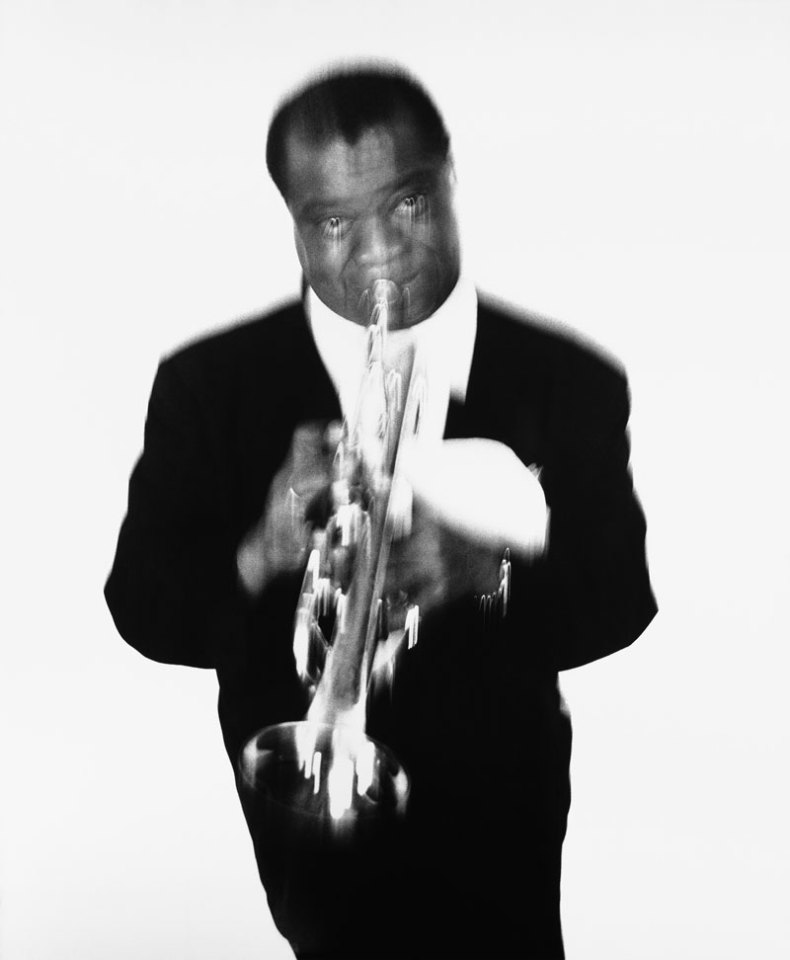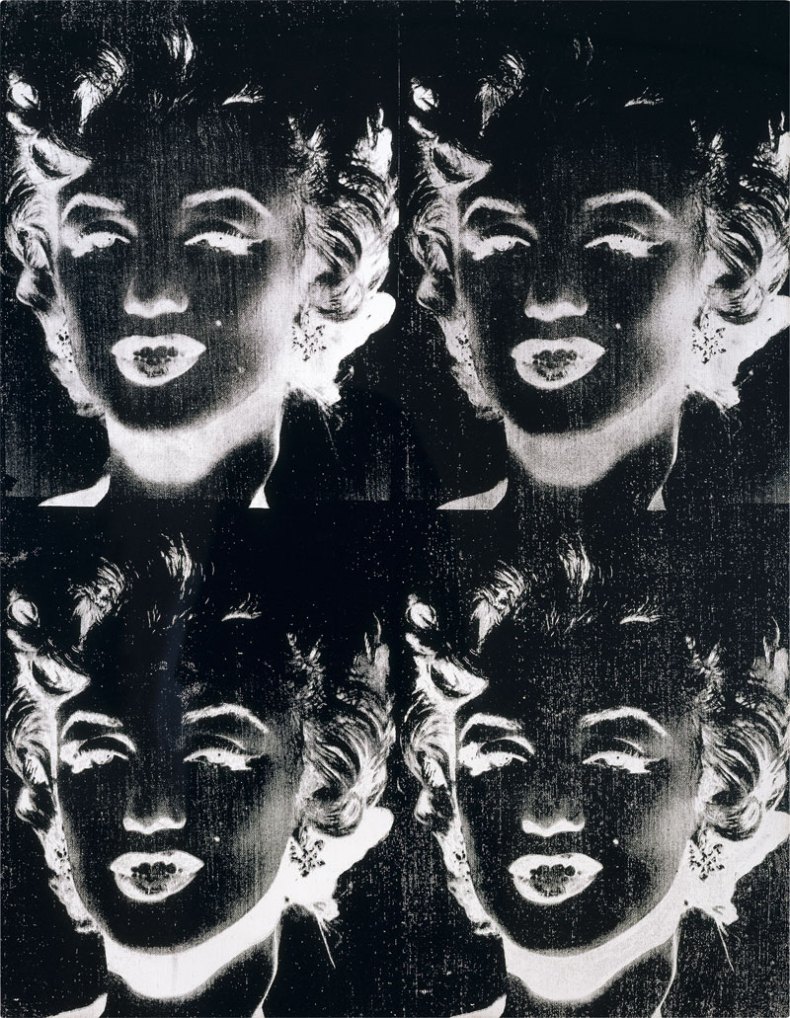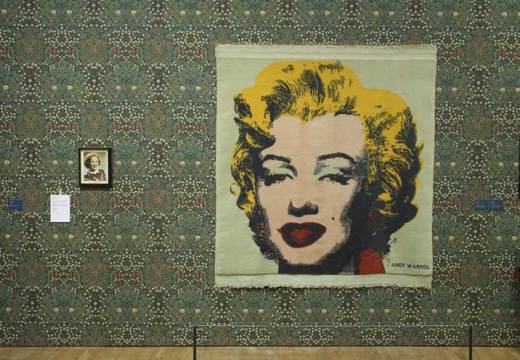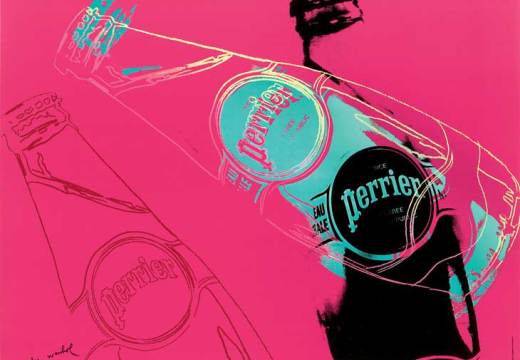The similarities between photographer Richard Avedon and artist Andy Warhol are almost uncanny. Both came from modest American backgrounds, both had substantial commercial success working in New York in the 1940s, and both then went on to develop their own distinctive artistic styles away from the commercial world in the 1960s. They treated similar subjects too: both captured the influential and the famous, and took an interest, often from a cynical standpoint, in the world of celebrity.
It may be surprising then, that ‘Avedon Warhol’ at London’s Gagosian Gallery (until 23 April) is the first exhibition to pair these two figures. The exhibition focuses primarily on portraits produced by Avedon and Warhol between the 1950s and ‘90s. The artists are displayed side-by-side, magnifying their similarities and differences, and bringing attention to subtleties that may otherwise have been missed.

Louis Armstrong (1955), Richard Avedon. © 2016 The Richard Avedon Foundation
This approach works well in the gallery’s first room, which displays their portrayals of the powerful. Dominating the room is Avedon’s The Family, Rolling Stone Portfolio (1976), which constitutes 69 black and white photographs of key figures in the history of American politics, including the then President Ford and his three immediate successors – Carter, Reagan and Bush – as well as various members of the Kennedy and Rockefeller families. In assembling these portraits together into a single work, Avedon succeeds in dulling individuals who are more usually deemed strong and charismatic. The Family turns them into an indistinguishable sea of mostly white men in grey suits – they could be anyone.

‘Avedon Warhol’ at Gagosian Gallery, London 2016. Photo: Mike Bruce/Gagosian Gallery
Warhol achieves a similar effect, albeit in quite a different way, with his colourful silkscreen portraits, which are displayed on the adjacent wall. As with Avedon’s The Family, Warhol’s portraits depict influential figures, such as members of the Iranian royal family and the Italian noblewoman Marella Agnelli. Warhol’s silkscreen printing process produces a kind of flatness and lifelessness: it robs the original photograph of each individual’s personal features or details and replaces them with cold, block colour. Unlike Avedon’s photographs, these are not portraits of consenting sitters – Warhol made them from photographs he found in newspapers or publicity shots. Their faces are mere tools for the artist to use for his final artwork.

Four Marilyns (1979–86), Andy Warhol. © 2016 The Andy Warhol Foundation for the Visual Arts, Inc./Artists Rights Society, New York
This is developed further in Warhol’s Four Marilyns (1979–86), a set of silkscreened portraits depicting Marilyn Monroe: Warhol became obsessed with portraying the star following her suicide in 1962. The use of repetition here is not only representative of Warhol’s work – the artist played with notions of seriality throughout his career – but of Pop art more generally, which often drew on images of mass production. This fascination with Monroe emphasises Warhol’s cynical view towards the superficiality of celebrity. He robs her face of all colour, leaving instead a black and white, ghostly image, with only the essence of Monroe’s facial features remaining.

Marilyn Monroe (1957), Richard Avedon. (1957), Richard Avedon. © 2016 The Richard Avedon Foundation
Avedon’s portrayal of the star is markedly different, however. His 1957 photograph of Monroe betrays the photographer’s greater – and perhaps more conventional – desire to convey the sitter’s inner nature. Monroe is all dolled-up and wearing a shimmering dress, yet Avedon captures her at a moment when she is off-guard. She looks subdued and inward: here is perhaps a flicker of what lies beneath this endlessly performing star.
The ubiquity of Warhol’s silkscreen prints, which have now been endlessly imitated, make it difficult to react to Warhol’s art. Next to Avedon, however, we are reminded of what made his art so disturbing and radical in the first place. In presenting these two artists side-by-side, the exhibition shows Warhol to be far more complex than his flattened, apparently celebrity-driven images might suggest.

‘Avedon Warhol’ at Gagosian Gallery, London 2016. Photo: Mike Bruce/Gagosian Gallery
‘Avedon Warhol’ is at Gagosian Gallery (Britannia Street), London, until 23 April.














![Masterpiece [Re]discovery 2022. Photo: Ben Fisher Photography, courtesy of Masterpiece London](http://zephr.apollo-magazine.com/wp-content/uploads/2022/07/MPL2022_4263.jpg)
Suzanne Valadon’s shifting gaze